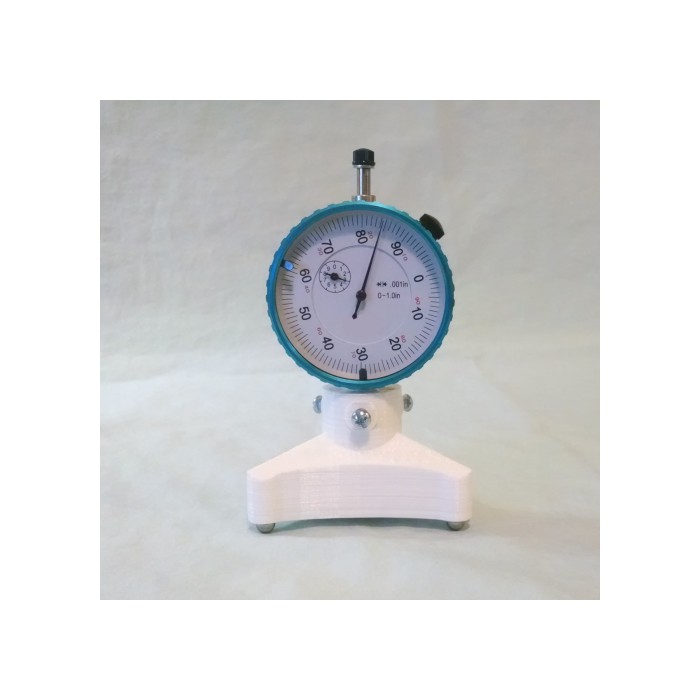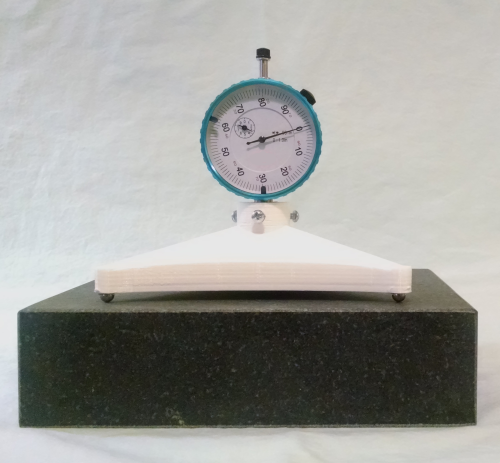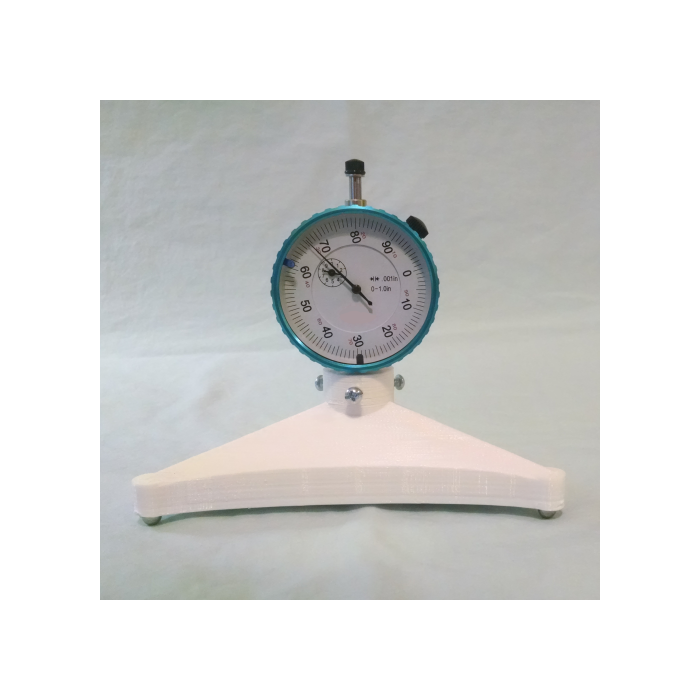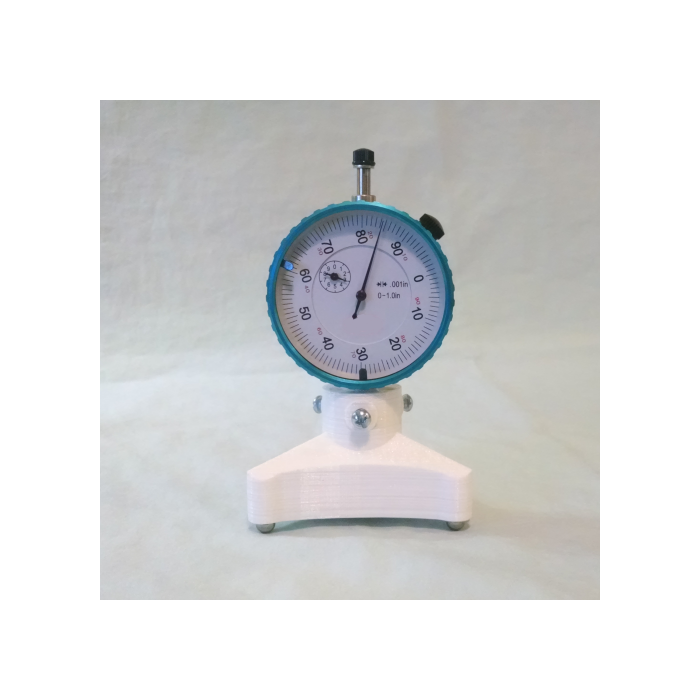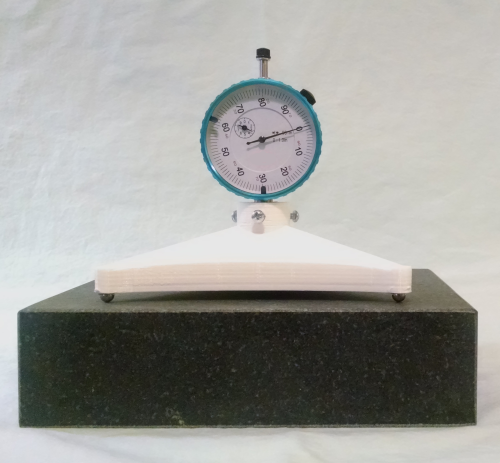Firsthand Discovery
Spherometer
Spherometer
Couldn't load pickup availability
Please select configuration above. You can select the spherometer base only or base & dial indicator together. If you already have a dial indicator the bases are designed to fit most 1" travel dial indicators. We also have surface plates available to use as a reference flat.
Small spherometer base radius: approx. 1.4"
Large spherometer base radius: approx. 3"
A spherometer is a tool used to measure spherical curvatures. They work great for measuring the radius of curvature (ROC) of your mirror as you progress through the grinding process, allowing you to determine if your ROC is getting longer or shorter. You can also use one to measure the radius of curvature of an unknown surface. They work by using three balls as feet that find a plane on your mirror's surface and a central probe, provided by a dial indicator, that measures the depth. Using a little bit of math, one can determine the radius of curvature of the mirror based the depth measurement and the radius of the spherometer's feet.
Each spherometer is measured and supplied with a chart of readings and their corresponding ROC calculation. Using the spherometer is very easy. Start by placing the device on a reference flat and turn the front ring around the gauge until the needle on the dial indicator is pointing at 0. Lift the spherometer by the base and gently set it down on the surface to be tested. Look at the new reading on the spherometer. If your surface is concave (as in most telescope mirrors) the dial indicator will read to the left of the zero (for example, if the needle is pointing at "78" your reading will be 0.022"). Find the corresponding reading on your spherometer reading chart to find the radius of curvature for this surface. You can also use our handy Spherometer Calculator.
Share
